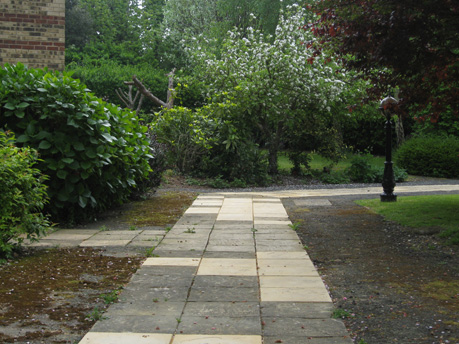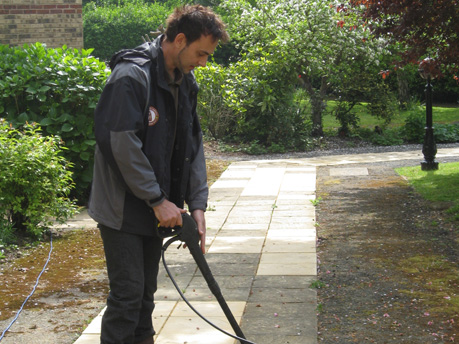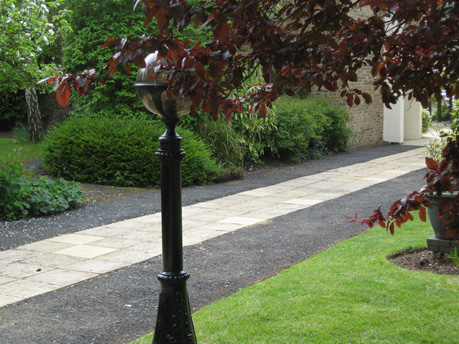The photographs below show a cleaned patio / path area against an uncleaned area which meets it and where cleaning is still in progress. You can see that paving can very quickly look tired and untidy as weeds grow into the area by colonising the sand-filled joints or settling onto accumulated detritus.
When pavements are left un-cleaned for an extended period of time, circular or near-circular ‘spots’ that are mistaken for a stain are often observed to develop. Sometimes these spots will be dark or almost black, but they can also be creamy white. These spots are often lichen, a combination of algae and fungus.
When patios are cleaned using acid-based cleaning products, for many types of paving, they do more harm than good. In particular, “Brick Cleaning Acid” or any “patio cleaner” that has hydrochloric acid listed in its ingredients may clean your paving, but there is also a significant risk that they will ruin it. This is related to the iron content found within various patio stones.
Coupled with some commercial “Moss Killers” available from garden centres, many products can re-colour the paving to a shade of orange, regardless of what colour it may have been originally. The lethal component of many Moss Killers is Ferrous Sulphate, and it is the ferrous component that causes the colour change by creating a rust-like deposit on the surface of the paving that becomes a medium-long-term stain, although the sulphate will kill the moss.
Bleach is also frequently used for cleaning patios, but although this may be a quick method to adopt, it is hazardous to both the user and the environment and not recommended by Bruks Tree Surgery.
Our completely enclosed rotating high pressure jets loosen and lift stubborn moss and weeds, whilst preventing dirt and debris from being sprayed over surroundings; such as walls and windows. This type of cleaning will also minimise the effect of erosion on any sand grouting between patio stones.
This form of power-washing will not undo the effects of UV fading of concrete dyes, or the bleaching of some limestone, but it can make the most of the colour that remains, by removing dirt, detritus and surface vegetation; revealing the natural beauty of the paving beneath.
Power-washing is particularly effective at removing mosses and algae that seem to thrive on certain types of paving, most notably ‘textured’ patio paving and clay brick paving.




